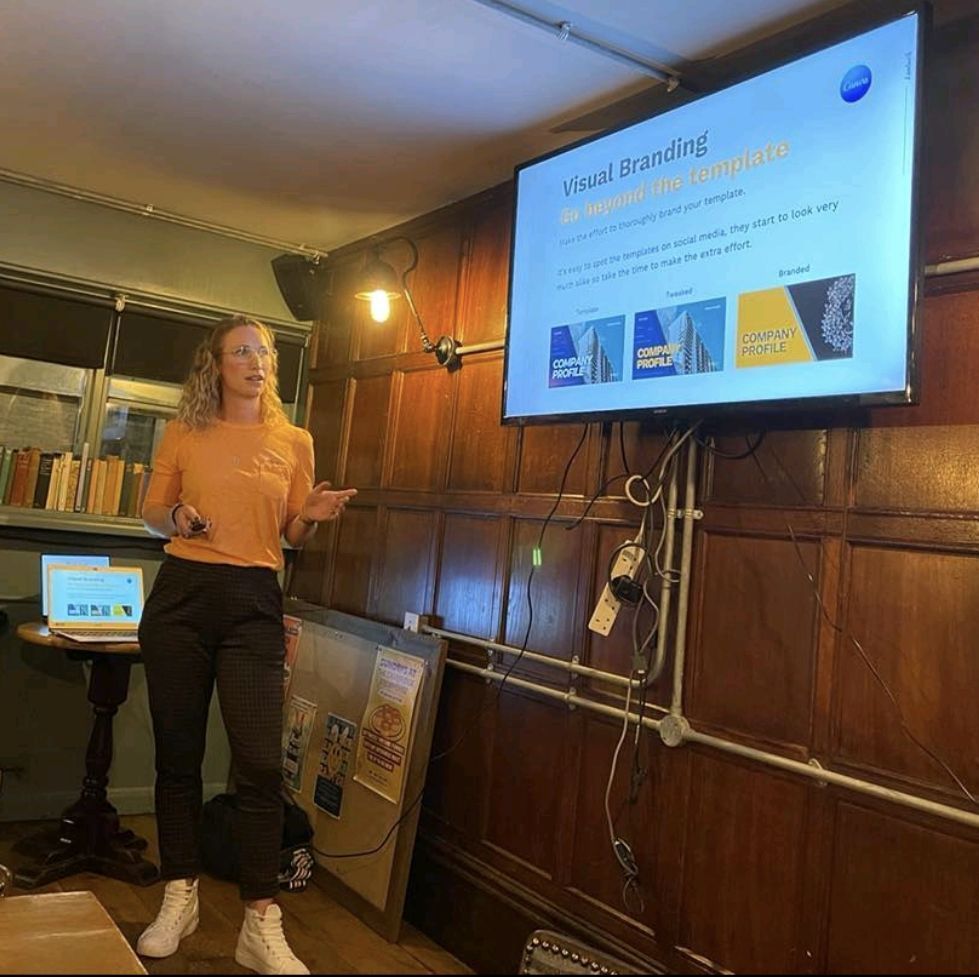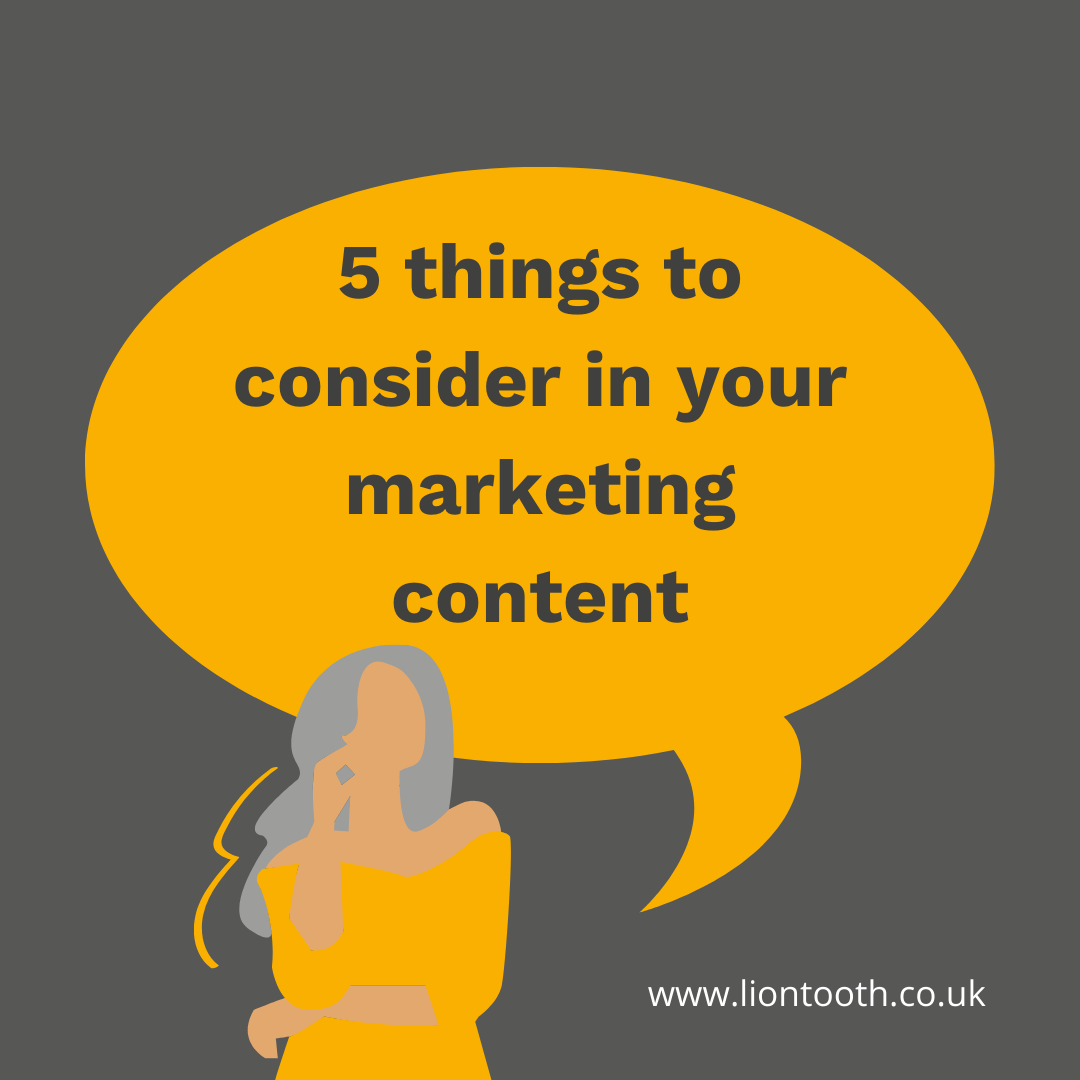Consistency is Key to Quality Content Marketing
- By Lisa Ellison
- •
- 23 Nov, 2020
- •
If you haven’t heard ‘consistency is key’ in terms of marketing – lucky you! (And sorry that I’ve just destroyed that for you).

One of the
biggest factors in content marketing (and all marketing) is consistency,
whether that’s:
- Showing up on your social media
- Posting regular blogs
- The tone of voice you use
- The branding you use
- The message you promote
- Your brand identity
By being consistent, you’ll reach and maintain engagement with the right people, in the right places and as you’ll know from my previous videos (see YouTube) and social media posts, I frequently reiterate the importance of place and time.
In order to be effective in your marketing efforts, you need to ensure you are consistent; some of the benefits of this include:
- Creating and meeting audience expectation
- Increasing audience retention
- Building a feeling of dependability from your audience
- Reliability is a big trust-builder
- Better traction on your social media
- People feel comfortable with predictability
- Become a voice of authority
- Strengthen your SEO
By building a framework of expectation for your audience, consistency in your content marketing will ensure you fulfil and exceed this expectation, putting you in a trusted and reliable position as a brand. This framework of expectation and the consistency of meeting it, also means that you will retain an engaged audience. They will grow to expect certain content from you and by providing that, you are becoming dependable, trusted and predictable. This creates a feeling of comfort.
By consistently providing quality content across your marketing channels, you will become a voice of authority in your industry, strengthening your position and helping you to become a ‘go-to’ brand.
Consistency also helps to build traction on your social media. By telling stories and providing quality content, your audience become hooked. They want to listen and engage, waiting for the next bit of the brand story, the next product release, the next snippet of information. The consistent, quality marketing content feeds the need for constant consumption and will have your audience coming back for more, showing up in anticipation.
Consistent, regular content marketing, which is accurate in its message, will help to improve your SEO and increase your audience reach.
To help in your efforts of consistency, planning is key. By planning ahead and not being left on the backfoot, you can ensure that you are always sticking to the brand guidelines and messaging as well as showing up regularly across your channels.


Jamie Laing - before you roll your eyes and scroll on, hear me out. (I know, the photo gave away my cliff hanger!) You may have been one of the 50,000+ people that saw my LinkedIn post last week, very much a throw away passing comment, essentially, to say I drove past Jamie Laing on my way home from the school run whilst he was on his fundraising mission for Children In Need.
I followed the story closely last week, quite hooked on his progress and whether or not he would make it. I'm not a celebrity-obsessed person and I rarely engage with anything celebrities do but last week was different and I'm sure I'm not the only one. I believe that many people didn't know he was even embarking on that challenge until last week - I didn't and I listen to Radio 1 daily! I also believe there's a lot of people that either don't know who Jamie Laing is or do know and don't particularly like him - we can't please everyone!
So, what was it about his fundraising effort that gripped the nation and led to him raising over £2m?! It's all about the story. And *this* is a great example of marketing done well - with an emphasis on storytelling and humanising your brand. His fundraising effort, backed by BBC Radio 1 coverage, provides a perfect case study on the power of storytelling in marketing. His journey emphasised his struggle, determination, vulnerability and honesty and that played a pivotal role in engaging the public emotionally and driving donations. If his personal narrative hadn’t been shared so openly, it’s unlikely that such a significant amount would have been raised.
This is something I've also experienced in fundraising efforts that I've been involved in and it makes all the difference but it takes strength to be vulnerable, and I'll always admire those who found the strength to tell their story (you know who you are 💛).
Here's what we can learn about the value of storytelling in marketing:
Emotional connection drives action : Jamie's story wasn't just about asking for donations; it was about sharing his personal experience and struggles throughout last week. People are more likely to connect with a cause when they can empathise with the storyteller. In marketing, emotional engagement creates a bond between the audience and the brand, making them more likely to engage.
Vulnerability builds trust : By being honest and vulnerable about his efforts and the challenges he faced, Jamie Laing built trust with the Radio 1 listeners. Vulnerability *humanises* a brand. In marketing, being transparent and acknowledging (and addressing!) flaws can enhance credibility and build a stronger, more authentic relationship with consumers.
Narrative creates value : Jamie Laing didn’t just promote an event, he shared a compelling and authentic story about his commitment. In marketing, your story can be the difference between blending in and standing out. Crafting a narrative around your brand or product creates meaning, making it more likely to stick in the minds of consumers.
Great - now how can you implement this in your marketing?
If you have ever worked with me, you'll have heard me going on about the importance of authenticity. This applies to everything from branding to customer service. If a brand is transparent about its processes, challenges and goals, customers are more likely to engage and support it.
Emotion drives engagement - whether it’s a product, service or cause, storytelling can create an emotional connection that compels action.
Consistent storytelling over time, where customers can see growth and commitment, helps keep them invested.
So basically, Jamie Laing’s Children In Need campaign demonstrated that storytelling - driven by vulnerability, determination and honesty, was the key to the level of success in his fundraising last week.
For marketers, it highlights that connecting with people on an emotional level, telling authentic stories and leveraging the right platforms can make all the difference in achieving success.
It can feel difficult to build emotion into corporate marketing but there's ALWAYS room to be human.
Does your brand feel a bit fuzzy? Let’s fix that.
The Define & Align Workshopis designed to bring clarity, structure and purpose to your brand- fast.

Sometimes I'll get a message to my inbox referencing my marketing agency
👀 God no! I'm
not an agency! No
. Sorry, no.
I'm a 1.5-person band. (The other half is my husband who's a silent partner, providing the incredible design skills). I don't want to be thought of as a marketing agency. For me it has connotations of frustration, waiting, chasing, and to be fair, more often than not incredible results but still.
I'm a no-nonsense , to the point communicator .
I like to be efficient and get stuff done and that includes getting results for my clients . I like the fact I'm basically flying solo with this, it's easy. It's straightforward. It's DONE.
Let me give you context and insight...
I have experience with agencies from BOTH sides - I've been the client AND the service provider. Honestly, I had challenges with both. See if anything sounds familiar:
From a client perspective , my biggest frustrations were always...
- The huge bill. Sorry guys, I always found it eye watering even though I wasn't paying!
- Not being able to get hold of my point of contact and waiting whilst others frantically ran around trying to get answers for me.
- I felt bad for (and frustrated about) the person playing piggy in the middle. I couldn't speak to Studio to get answers or explanations about design issues/challenges/restrictions. Information was often lost in transit.
As the service provider , (for me) these were my biggest frustrations...
- There too many systems and processes that got in the way of me just getting on and providing the level of service I wanted to.
- Too many other cogs in the wheel slowing down the process.
- Too many hoops to jump through and restrictions.






